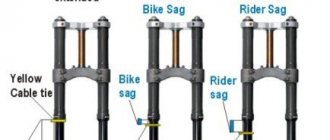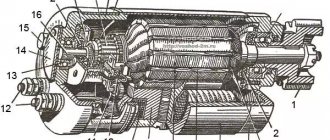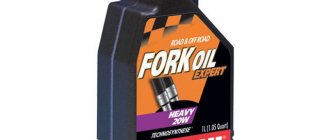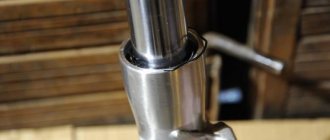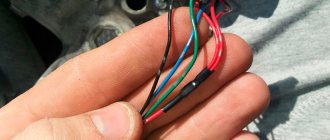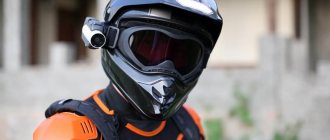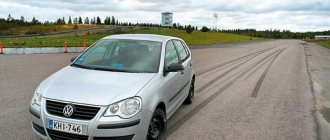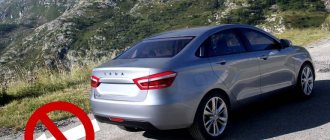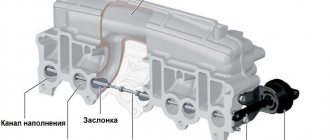The motorcycle gives a feeling of absolute freedom, becoming a passion and an integral part of life. If you are wondering “should I buy a motorcycle,” then this article is for you.
If you are an absolute beginner who has just received a category “A” license, then experienced experts advise limiting yourself to three types of bikes:
- cruisers;
- classics;
- road.
These are ideal options for those who want to learn how to accurately “place” a motorcycle into a turn, master control of the gas handles and brake levers.
Enduro, sportbikes and other classes should be included in a separate category. These two-wheeled monsters require some skill to control and pack a lot of power.
What to choose for a city newcomer
Yamaha YBR 125 - this model became the starting point for many who eventually switched to more powerful bikes. Popularly called an “ebrik”, it is a lightweight, low-power motorcycle (125 cm3 and just over 100 kg), friendly for beginners, and easy to learn to operate. This is a very affordable “iron” horse, which is also unpretentious in maintenance.
One of the disadvantages is that if your height is more than 180 cm, then after ten kilometers your legs will start to hurt due to the unnatural position of your body. It is also worth mentioning its unassuming appearance, which for some is also an important drawback. If we consider 125 cc units, then the Yamaha YBR 125 is the ideal choice for a first motorcycle. It is unrivaled both in terms of reliability/controllability and operating costs. All that is needed is periodic maintenance of the chain.
If the appearance of the bike is very important, then pay attention to the Honda CB 400 SF. It's also a lightweight, easy-to-handle bike. This is the main model in the fleet of Japanese driving schools.
The Kawasaki W650 is an excellent choice for a beginner who has mastered 125cc well.
Travel models
Long trips involve transporting some luggage. For these purposes, use touring bikes that have a large luggage compartment and additional compartments for carrying things, increased suspension travel for a comfortable ride and increased ground clearance. Purchase options:
- Kawasaki VN 1700 Vulcan;
- Honda NT650V Deauville;
- Honda GOLD WING 1800;
- Yamaha XTZ 1200 SUPER TENERE.
Choosing a motorcycle for those who are more experienced
Once you've mastered a road bike and gained the right level of confidence, you'll probably want something more powerful, sporty and solid.
Choppers are often confused with cruisers. But in reality, choppers have an extended fork and a rigid rear suspension. This “limousine” in the world of cars is designed for leisurely movement on high-quality road surfaces. The chopper is a heavy unit with limited maneuverability. But these “horses” are loved for their style and charisma. They are able to stand out in any traffic flow, attracting glances around.
Sports bike - the choice of this motorcycle is justified for riding on the track. Many people do not recommend using them in the urban jungle. Unlimited speed capabilities can play a bad joke on a “hot” driver. But if you are capable of self-control, you will become one of the most noticeable road users.
When purchasing a chopper or sportbike, you must initially add a separate budget for maintenance. Compared to cruisers or the same road bikes, maintenance costs will be many times higher. But for this you get a two-wheeled racing car.
If you want to become the owner of a real all-terrain vehicle without stopping at the end of the asphalt surface, then your choice is enduro. All-terrain models have increased suspension travel, low weight and maximum maneuverability. This allows you to overcome the most rocky slopes and muddy areas. On the highway, such a bike will be ineffective due to the small tank volume.
Comfortable and safe motorcycle riding position
It just so happens that cars are much more convenient to drive than motorcycles - in a four-wheeled vehicle, you just need to sit down in the seat and spend a few seconds finding the ideal position, so as not to return to the problem of landing in the future. But the motorcyclist must constantly monitor himself, since not only comfort, but also his safety depends on his seating position. This is especially true for sportbike owners who constantly travel at high speed. Therefore, every owner of a two-wheeler needs to know what the correct position on a motorcycle is. It depends on many factors, including the quality of the road surface, maneuvering and the type of motorcycle used - you can learn about all this from the article.
Landing on different motorcycles
If you have purchased a low-power city motorcycle or moped, then an upright seating position will be correct for you. Since the footpegs in this technique are located in the middle between the two wheels, the driver's legs must be bent at approximately right angles. This position will allow you to squeeze the gas tank with your knees without pressing against it and without lowering your torso. However, you need to remember that the contact should be tight in any case - this will help maintain maximum stability and prevent falling out of the saddle during strong shaking. The correct position on a city motorcycle involves straightening your back - in this position, long trips through traffic jams become less tiring, and it will be much more comfortable to rest your foot on the asphalt when stopping.
The second popular type of motorcycle is a chopper with an extended fork and a high handlebar. The footpegs on it are located under the tank, so the rider’s legs are bent at a slight angle or even straightened. Many beginners, when sitting on a chopper, intuitively take a seat with their torso tilted back, which is due to the high position of the steering wheel. However, they make a mistake, because in this position the muscles will be constantly under tension, and with strong shaking or a sharp gust of wind there will be a threat of falling out of the saddle. The correct position on a chopper is with your torso slightly tilted forward and your arms bent at the elbows, which will allow you to best control a heavy motorcycle with a long fork in turns.
Proper seating on a motocross motorcycle is a topic for a separate article, so we’ll mention it briefly. When moving evenly on asphalt, the driver should take the same body position as when riding a city motorcycle - with a straight back and legs bent at right angles. If you are going to go on a dirt track, then the landing will have to be constantly changed. Notice how professional motocross athletes ride - they sit up on straights and sit down in corners or on large bumps. A straightened body position saves the motorcyclist from unpleasant impacts that occur when riding on a dirt road, and also allows for improved visibility, reduced the amount of dirt sticking to the helmet and improved controllability of two-wheeled vehicles.
It is impossible to adopt a more or less upright position on a sports motorcycle - its handlebars are located below the level of the tank, and the footpegs are very close to the rear wheel. As a result, the driver is forced to lie with his body on the tank and squeeze it tightly with his knees, pressing himself as close as possible to the motorcycle. This position helps improve the aerodynamics of the vehicle, as well as improve its stability on the road. In this case, the rider can lean on the rear pegs and stand up to put more load on the front wheel, preventing it from lifting off the ground during active acceleration.
Hand position
Regardless of the type of motorcycle, the rider must maintain the same hand position to ensure comfortable control. They should be bent at the elbows and also relaxed. You cannot lean your hands on the steering wheel, transferring part of your weight to it - by doing this you interfere with the operation of the front suspension, and also impair controllability, since the sensitivity will be less with significant tension. A proper riding position should keep your elbows as close to the tank as possible to improve aerodynamics and prevent injury during tight turns. Extended elbows are a sign of excessive tension - if you perform a dangerous maneuver or if there is a danger of falling, this will lead to the inability to maintain control of the motorcycle. The shoulders must be tilted forward and relaxed so that the landing does not create difficulties in controlling two-wheeled vehicles. The position of the body with raised or widely spread shoulders would be completely incorrect. The significant muscle tension that occurs in this case will also not lead to anything good.
Leg position
It should be remembered that in all motorcycles, except choppers, the plastic lining of the tank is designed so that the driver can wrap his legs around it, increasing the stability of his position in the saddle. Your legs should not be spread even when moving in a straight line - otherwise a strong shake could knock you out of the saddle. In addition, if you do not tighten your legs, the motorcyclist will instinctively assume an incorrect position with his torso tilted back - as a result, during acceleration he will deviate even more from the steering wheel, losing control. Many beginners who ride a sports bike for the first time also try to ride a corner in a sideways position. In this position, most of the motorcyclist's body is shifted inside the turning arc, which makes it easier to tilt the motorcycle body, but seriously impairs the stability of the two-wheeled vehicle. To understand how to sit correctly in such a case, you need to watch recordings from sports competitions - motorcyclists press their legs as tightly as possible to the gas tank, maintain the same body position, but slightly raise their shoulders to maintain full control over the technique.
If everything went wrong...
Practice shows that a motorcyclist can understand that a fall is inevitable a few seconds before such an unpleasant incident. Therefore, if the motorcycle begins to escape from your hands, and you feel that you will soon lose control, brace yourself and prepare for a proper fall. It is very important to choose the correct position at this moment. It is best to rise a little in order to see in time which direction the motorcycle will begin to fall. Your hands should be free - you should not grab the handlebars and try to stay in the saddle, as this will not allow you to free yourself in time before falling. When you determine exactly where the motorcycle is falling, add gas and jump off in the opposite direction, trying to fall on your back, protecting your limbs. Remember that the landing position before the fall should be such that you and the motorcycle are as far apart as possible at the critical moment.
Tips for passengers
The main rule for a person who rides a motorcycle as a passenger is to try to exactly copy the driver’s position. That is, on a sportbike or grand tourer he should lie pressed against the back of the motorcyclist, on a chopper he should sit slightly leaning forward, and on a city motorcycle or moped he should maintain a straight back position. The question also arises of how a passenger should sit on a motorcycle so as not to fly out of the saddle during shaking - after all, the driver holds on to the steering wheel, while the second person on a two-wheeled vehicle has nothing to grab onto. If the motorcycle does not have special handles that are designed to carry a passenger, then you will need to hold on to the driver, while trying not to interfere with him. However, contact will need to be broken if there is a threat of a fall, since it will pose a risk of serious injury to both people. If we are talking about a sportbike or a motorcycle of another class with a similar seating position, then the passenger will have to repeat all the actions of the driver. When cornering, it should lean in to prevent loss of control, lean back when braking, and stand up slightly when accelerating. That is why experienced motorcyclists advise taking with you on a long journey only good friends who have already traveled hundreds of kilometers with you.
Simple rules
Despite the seeming difficulty of choosing the right fit, you can get used to it after just a few days. However, in a critical situation, most motorcyclists still get confused, trying to choose the correct body position intuitively, which usually leads to loss of control. Therefore, beginners are advised to monitor the landing, checking whether the position of the arms and legs is correct, as well as the tilt of the body. Long-term training will help you act correctly in emergency situations, protecting yourself from the unpleasant consequences of loss of control.
Criteria for choosing your first motorcycle based on height, fit and other parameters
Our short guide will provide strategic assistance in choosing a motorcycle. Consider it before you make a purchase and register your motorcycle:
a convenient program for selecting a motorcycle based on many parameters: https://cycle-ergo.com
- height: sit on the bike, ensuring that you can stand firmly on your feet when standing;
- weight: try rolling the bike for a few meters using your legs. Also do this procedure while standing to the side. If both options are given with great difficulty, then the choice of motorcycle should be opted for a lighter model;
- landing: sit in the saddle of the “iron” horse for at least 5 minutes, taking the working position of your arms and legs. If during this time you become uncomfortable, you will have to consider another option;
- engine capacity: the maximum recommended cubic capacity for beginners is 650 cm3. If you feel like a more experienced driver, then you can consider more powerful models.
Choosing a motorcycle - version for the lazy
Today I will speak with a somewhat unusual topic - I want to talk about how to try on a motorcycle without getting up from the computer chair. We will talk about the cycle-ergo website, so most motorcyclists can pass by - you already know it without me. But if you don’t know this site, don’t know English, want to try the bike on yourself for purchase or just see how it is, then go ahead!
So, you must meet any of the following requirements to continue:
- You have an idea about the class of motorcycles that you need, you have chosen several models and know what the manufacturer calls them (yes, the site does not understand “ruff”, “vyfer”, “shadovka” and “well, that mud messer like Vasya’s”)
- You just want to put a figure on a motorcycle and laugh at it.
- STEP 1 - LOGGED IN
We go to the website https://cycle-ergo.com/ - yes, this is advertising to some extent, but how will we work with the site if I don’t tell you which one?)
This is what the site looks like.
STEP 2 - SELECTING A MOTORCYCLE
No time to explain, press the red button !
The selection of the desired model will open. It's simple - just click on the brand and a list of models opens. You can scroll through the list or select through the search.
Let's say you are a beginner chopper. There is no motorcycle yet, but there is already a leather jacket, the hour has struck, you can’t stop us, and so on.
But you are not the smallest man, unlike the amount of money. (I don’t want to offend the female part of the audience, but as an example I took a Euro-height man... it happened that way).
OK, we have a figure on a motorcycle. But this is not you yet. You need to adjust your figure to suit you (or make it disproportionate and make you laugh).
STEP 3 - SELECTING A DRIVER
What are the Height and Inseam parameters and where should I specify them? The site has already thought for you, everything is not as complicated as it seems. Click on Options:
- The first parameter, when clicking Yes, will convert us to the metric system. Just what you need!
- The second option will place the figure's feet on the ground, as if the person is standing and not riding.
- The third one will center the picture on the seat. Needed for comparison
- Arm straightness - responsible for the bend of the elbow or the way we will fall
- Placement on seat with buttons (if any) - for position on the seat
Let's set up our motorcyclist:
Height - growth. Everything is simple here.
Inseam - length along the inner seam. This means that you take a ruler, a centimeter, a tape measure and measure the distance from your bells... from the secret triangle... from the seam between the legs of your pants and to the ground.
Well, not yet the Wolf from “Well, wait a minute!”, but it looks like this bike will be a little too small for our motorcyclist. Maybe look for something more?
STEP 4 - FIT COMPARISON
Press the red button again to add a motorcycle or change the model by changing it from above.
Already better. By the way, if you didn’t change the model, but pressed the red button again, you should have two motorcycles:
And now, if you scroll the wheel, you can not only switch between them, but also superimpose them on top of each other to understand what has changed:
Hmm, not very clear. Our driver blurs. Remember the seat center button? (number 3 in options) Now is the time to press it:
It’s immediately obvious that on a larger bike the legs are straighter and the knees don’t point towards the ears. But the arms also became higher.
But let's say you have short legs. Really short. How will the system deal with this?
This error means that your legs are not long enough to reach the footrests. It's sad, apparently this bike is too big.
But why do we need the 2nd option? Feet on the ground?
I just put our little guy behind the wheel of a big all-terrain tourer from BMW. He has a much more “road” landing, that is, his legs should be bent. In general, they are still bent, but this is where we need the 3rd option. We put his feet on the ground...
No, we don't. They don't get it. Obviously, this person should not take such a motorcycle - it will not hold it.
STEP 5 - FINE TUNING
And finally, let’s return to our normal-legged man. Watch him hit 140 on Steed:
A few words about the numbers below:
Forward lean: leaning forward. I've now leaned the rider as far as possible at a not-so-impressive 23 degrees.
Owners of sports bikes grin contemptuously - for them, 140 is somewhere in 2nd gear, well, maybe 3rd.
(sorry for the glitches in the pictures, the site adjusts it that way)
So we'll put our driver in a super sport and see the typical "shrimp" riding position. Let's try to straighten it out?
Even if you straighten your arms completely, the angle will be greater than on Steed with a full tilt - a different landing.
But let's continue.
Knee angle : bend of the knee. A smaller number means a larger fold.
Hip angle : hip angle. Same principle.
We're done with the driver, let's move on.
STEP 6 - PASSENGER
Our driver probably has a girlfriend. How will it look on a motorcycle? The Passager Info button is responsible for exactly this, the settings are the same.
CONCLUSIONS
This site will be useful for fitting an arbitrary person to an arbitrary motorcycle. It will help you understand how much it fits there or does not fit.
Don't expect the site to answer for you whether it will be convenient for you or not.
That's all I wanted to say. Thank you for your attention.
PS Yao Ming is a Chinese basketball player who completed his professional career. Height - 229 cm.

